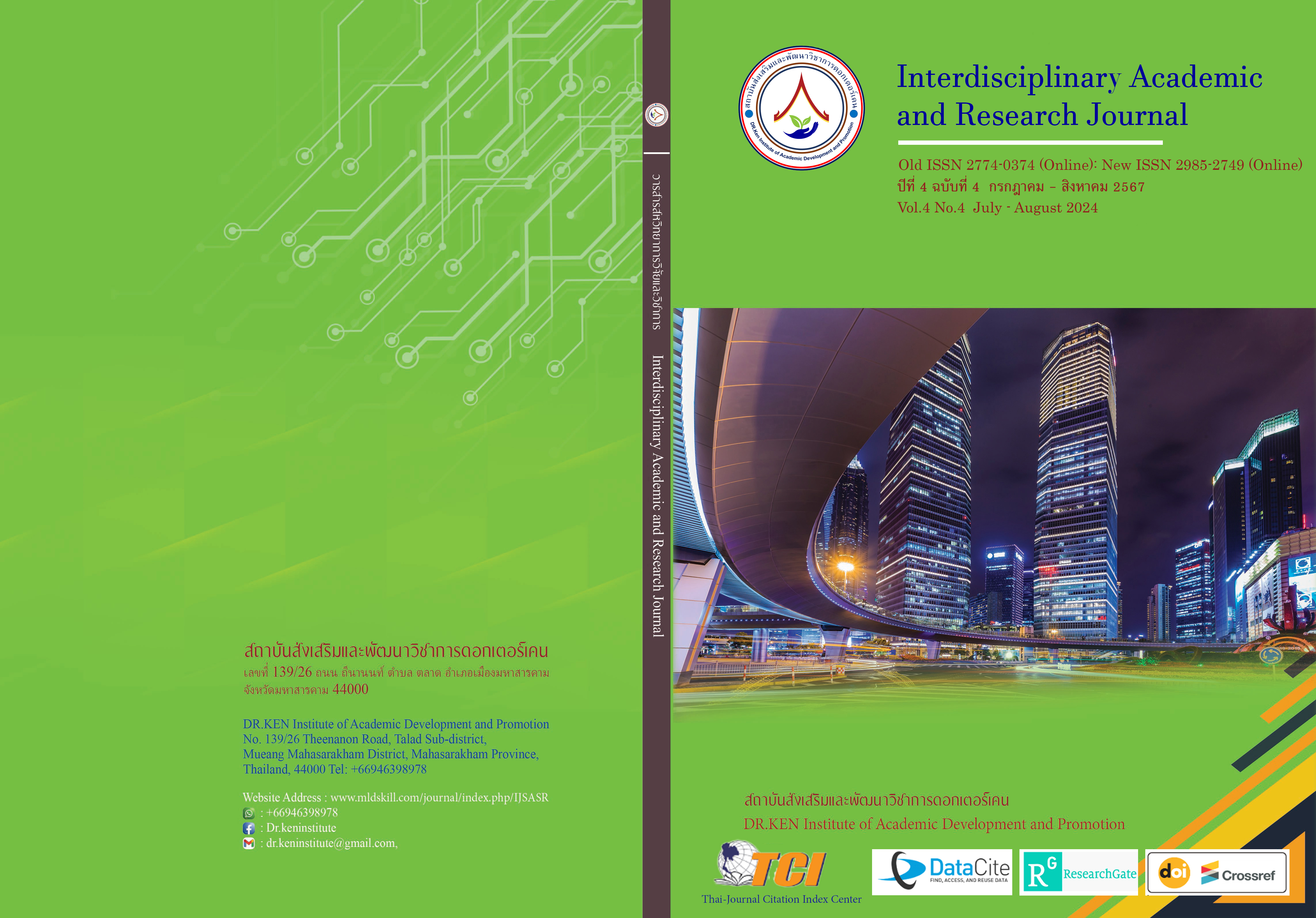The Effects of the OK5R Teaching Method on Reading Comprehension of Sixth-Grade Students
DOI:
https://doi.org/10.60027/iarj.2024.276858Keywords:
Reading Comprehension Skill;, The OK5R Teaching Method; , Sixth-grade StudentsAbstract
Background and Aims: Reading comprehension is an important skill for sixth-grade students. Since this skill can enable students to translate letters, words, and sentences in understandable ways, students can find the main ideas in the reading passages. Also, students can conclude the passage on various themes such as comparison, forecasting the next situation,
The purpose of the author, and the morals gained from the passages. Therefore, the OK5R teaching method allows students to link their old knowledge to new knowledge.
This method makes it easier for students to understand what they have read. Thereby, this study is aimed at comparing the reading comprehension skills of grade 6 students before and after teaching by using the OK5R teaching method.
Methodology: The participants are 20 of sixth-grade students from Banborphong School, Phetchaburi, who enroll in the second semester in 2024. The research instruments are 1) lesson plans and 2) reading comprehension tests. All the obtained data will be analyzed by percentile, average, standard deviation, and dependent samples t-test. The reading comprehension skills of sixth-grade students are higher when using the OK5R teaching method. Statistically significant at.01.
Results: The research found that using the OK5R teaching method had an impact on the reading comprehension skills of sixth-grade students. It shows in the result that students have higher skills in reading comprehension. Furthermore, the OK5R teaching method can develop reading comprehension skills since it has a clear sequence of activities as well as an interesting range of activities that help develop students' reading comprehension skills.
Conclusion: The study shows that sixth-grade students' reading comprehension skills are considerably improved when the OK5R teaching method is used. This demonstrates how well the approach works to promote skill development through planned and interesting activities.
References
กระทรงศึกษาธิการ. (2551). หลักสูตรแกนกลางการศึกษาขั้นพื้นฐาน พุทธศักราช 2551. กรุงเทพมหานคร : โรงพิมพ์ชุมนุมสหกรณ์การเกษตรแห่งประเทศไทย จำกัด.
ฉวีลักษณ์ บุณยะกาญจน. (2557). จิตวิทยาการอ่าน. พิมพ์ครั้งที่ 2. กรุงเทพมหานคร : สุวีริยาสาส์น.
นวภรณ์ อุ่นเรือน. (2560). ภาษาไทยเพื่อการสื่อสารในงานอาชีพ. กรุงเทพมหานคร : ซีเอ็ดยูเคชั่น.
ประพันธ์ศิริ สุเสารัจ. (2556). การพัฒนาการคิด. กรุงเทพมหานคร :โรงพิมพ์ห้างหุ้นส่วนจำกัด919เทคนิคพริ้นติ้ง.
พิมพันธ์ เดชะคุปต์ และพเยาว์ ยินดีสุข. (2558). การจัดการเรียนรู้ในศตวรรษที่ 21 (พิมพ์ครั้งที่ 2). กรุงเทพมหานคร: สำนักพิมพ์แห่งจุฬาลงกรณ์มหาวิทยาลัย.
มณีรัตน์ สุกโชติรักษ์. (2549). อ่านเป็น เรียนเก่ง สอนเก่ง. กรุงเทพมหานคร : นานมีบุ๊คส์พับลิงคชั่นส์.
วัชรพล วิบูลยศริน. (2561). วิธีวิทยาการจัดการเรียนรู้ภาษาไทย. กรุงเทพมหานคร : สำนักพิมพ์แห่งจุฬาลงกรณ์มหาวิทยาลัย.
ศิวิภา ชูเรือง. (2550). การศึกษาความเข้าใจในการอ่านภาษาไทยและความพึงพอใจต่อวิธีการสอนแบบ OK5R ของนักเรียนชั้นมัธยมศึกษาปีที่ 1. วิทยานิพนธ์ปริญญาการศึกษามหาบัณฑิต มหาวิทยาลัยทักษิณ.
สนิท ตั้งทวี. (2546). อ่านไทย. กรุงเทพมหานคร : โอเดียนโสตร์.
สนิท สัตโยภาส. (2556). ภาษาไทยเพื่อการสื่อสารและสืบค้น (พิมพ์ครั้งที่ 2). กรุงเทพมหานคร : บริษัท 21 เซ็นจูรี่ จำกัด.
สำลี รักสุทธี. (2553). สอนอย่างไรให้เด็กอ่านออก อ่านได้ อ่านคล่อง อ่านเป็น เขียนได้ เขียนคล่อง เขียนเป็น. กรุงเทพมหานคร : สำนักพิมพ์พัฒนาศึกษา.
สุนันทา มั่นเศรษฐวิทย์. (2545). หลักและวิธีการสอนอ่านภาษาไทย. กรุงเทพมหานคร : บริษัทโรงพิมพ์ไทยวัฒนาพานิช จำกัด.
Dallmann, M. and Boer, J.J. (1978). The teaching of reading. New York: Holt, Reinhart, and Winston.
Pauk, W. (1984). How to Study in College. New York: Houghton Mifflin Custom Publishing.
Downloads
Published
How to Cite
Issue
Section
License
Copyright (c) 2024 Interdisciplinary Academic and Research Journal

This work is licensed under a Creative Commons Attribution-NonCommercial-NoDerivatives 4.0 International License.
Copyright on any article in the Interdisciplinary Academic and Research Journal is retained by the author(s) under the under the Creative Commons Attribution-NonCommercial-NoDerivatives 4.0 International License. Permission to use text, content, images, etc. of publication. Any user to read, download, copy, distribute, print, search, or link to the full texts of articles, crawl them for indexing, pass them as data to software, or use them for any other lawful purpose. But do not use it for commercial use or with the intent to benefit any business.
















.png)


